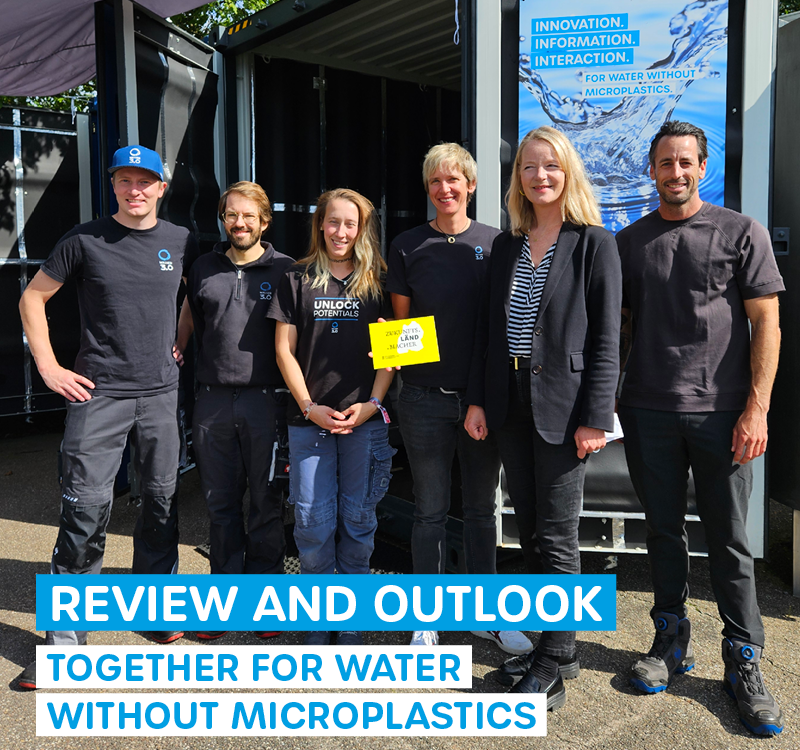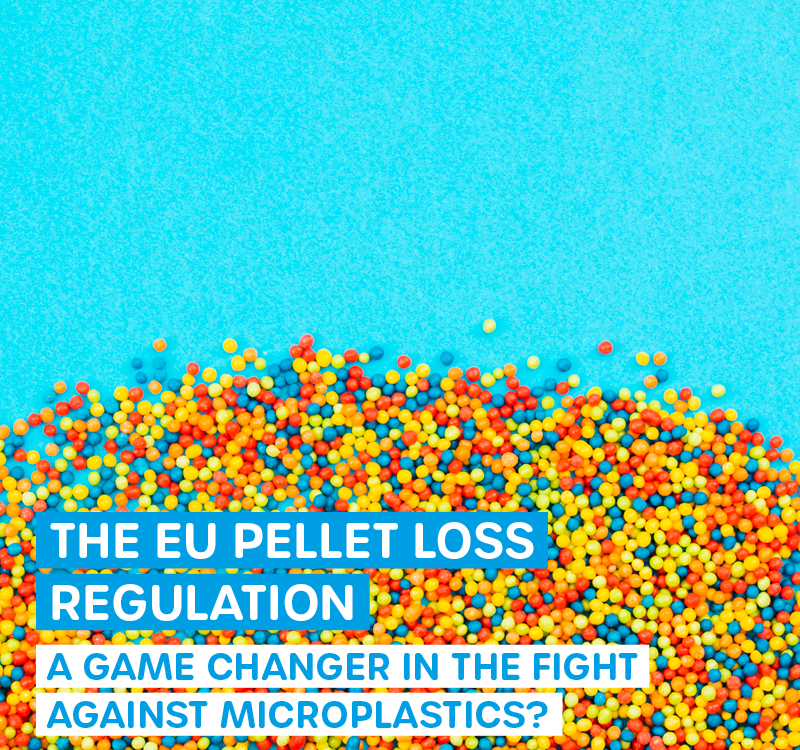
The tire wear myth
6. August 2025
PFAS in everyday life
13. August 2025Microplastic Removal as Climate Protection: How Latest Microplastics Research Contributes to CO₂ Reduction
New findings show: Systematic removal of microplastics at hotspots can make a significant contribution to climate protection
Climate change and microplastic pollution – two of the most pressing environmental problems of our time are more closely linked than previously assumed. Current research shows: microplastics are not only a problem for the environment, but also an underestimated climate driver. At the same time, targeted removal of microplastics at identified hotspots offers enormous potential for climate protection.
When Microplastics Heat Up the Climate
The numbers are alarming: an estimated 358 trillion microplastic particles are floating on the ocean surface alone, with quantities in deeper water layers unknown. And what many don't know: these tiny plastic particles actively heat up the climate.
Microplastics as Greenhouse Gas Producers
When plastic degrades in the environment, climate-damaging gases are continuously produced. Polyethylene and polystyrene – the most common plastics – release methane and ethylene during UV decomposition. The methane then reacts in the atmosphere to form carbon dioxide (CO2), intensifying the greenhouse effect. The key point: the smaller the particles, the larger the surface area – and the more greenhouse gases are released.
Attack on the Biological Carbon Pump
Even more serious is the disruption of the marine carbon pump. Latest studies show: microplastics threaten one of Earth's most important climate regulators – the ocean. The ocean stores 38,400 petagrams (38,400 + 15 zeros) of carbon – more than all other carbon reservoirs combined.
The biological carbon pump works like this: phytoplankton binds atmospheric carbon dioxide through photosynthesis. Zooplankton eats the algae and excretes carbon-rich fecal pellets that sink into the deep sea. There, the carbon is stored for millennia.
Microplastics massively disrupt this process:
- Plastic particles block light and reduce photosynthesis of phytoplankton
- Microplastics in fecal pellets change their sinking speed
- Carbon transport to the deep sea is disrupted
Microplastics Research: Hotspot Hunting for Climate Protection
This is where our innovative microplastics research comes in. With systematic microplastics mapping, we identify the locations where microplastic removal achieves the greatest climate impact.
Concrete Results from Practice
Our river sampling shows continuous pollution with dramatic differences in pollution levels :
- Alb: Microplastics from mouth to source in all samples
- Queich: Average of 240 microplastic particles per liter, with a hotspot of 944 particles/liter
- Rehbach: Increased concentrations before Rhine confluence due to lower dilution
- Even at sources: Even in supposedly "clean" source areas, we find 4 particles/liter
The main sources are identified: tire wear from highways, intensive agriculture, wastewater treatment plants, and landfills.
Innovation Makes the Difference
What makes our project special: the speed and precision of analysis. While conventional FT-IR spectroscopy takes days, our fluorescence microscopy with selective MP-1 markers delivers results in hours.
Our mobile Particle Sampling Unit (PSU) enables standardized sampling with 100+ liter volumes – significantly more representative than previous methods, while the citizen science approach with our analytical kits makes data collection scalable.
Measurable Climate Impact through Targeted Removal
- Quantified Effects
Removing microplastics at hotspots can achieve significant climate effects:
- Protection of carbon sequestration: The ocean sequesters 2.6 Gt CO₂ annually – a value of $390 billion at $150/t CO₂
- Prevention of greenhouse gas emissions: Less microplastics means fewer methane and ethylene emissions
- Preservation of blue carbon ecosystems: Mangroves, seagrass beds, and salt marshes are disproportionately important carbon stores
- 80/20 Rule for Maximum Efficiency
Our hotspot strategy follows the 80/20 rule: 80% of microplastic pollution comes from 20% of the sources. Through targeted removal at these hotspots, we maximize climate impact at a minimal cost.
Breaking the Vicious Cycle
Particularly problematic: climate change and microplastics mutually reinforce each other. Higher temperatures accelerate plastic degradation and extreme weather distributes microplastics more widely. At the same time, more microplastics means more greenhouse gases are produced.
Our microplastic removal breaks this vicious cycle:
- Immediate effect: Less plastic degradation = fewer greenhouse gases
- Medium-term effect: Protection of the biological carbon pump
- Long-term effect: Stable marine carbon stores
Technology That Works
Our Wasser 3.0 technology makes microplastic removal measurable:
- Agglomeration and separation: Quantifiable removal in kilograms and tons
- Circular economy: Recycling of removed microplastics
- Scalable application: Mobile systems for various water body types
From Research to Practice: Immediate Measures for Maximum Climate Impact
- Hotspot treatment: Landau wastewater treatment plant with 4th treatment stage + microplastics removal
- Preventive measures: Source reduction and microplastic-free alternatives
- Continuous monitoring: Standardized protocols for long-term observation
International Scaling
The Global Map of Microplastics becomes the database for worldwide climate protection measures. Technology transfer and international cooperation multiply the impact.
Conclusion: Microplastics Removal is Climate Protection
The findings of our microplastics research are clear: microplastic removal is an underestimated but highly effective climate protection measure. Through systematic hotspot identification and targeted removal, we can:
- Protect the biological carbon pump (value: $390 billion/year)
- Prevent greenhouse gas emissions from plastic degradation
- Preserve critical carbon stores in marine and terrestrial ecosystems
Time is running out. While plastic production continues to rise, our data shows: targeted microplastic removal at hotspots can make a measurable contribution to climate protection.
It's time to treat microplastic pollution not just as an environmental problem, but as an urgent climate protection issue. The technology is there and the hotspots are identified – now we must act.






